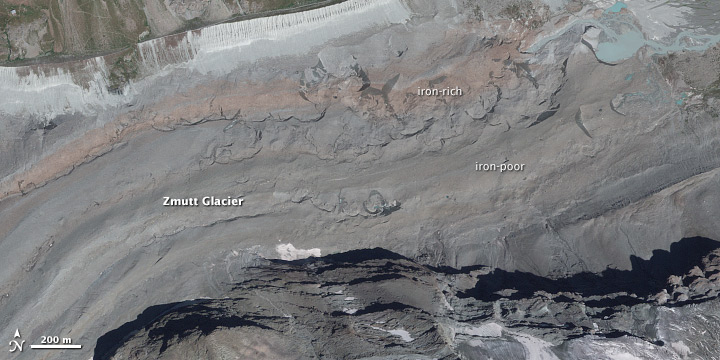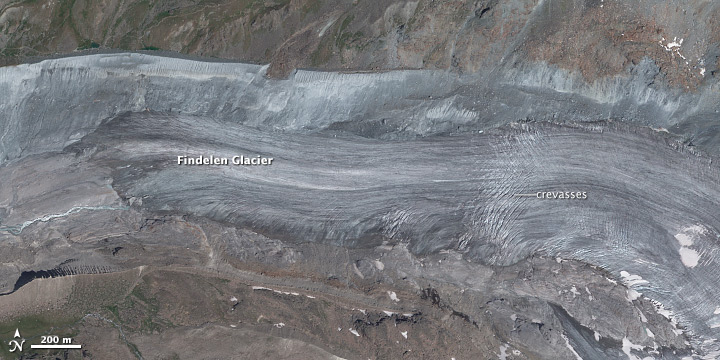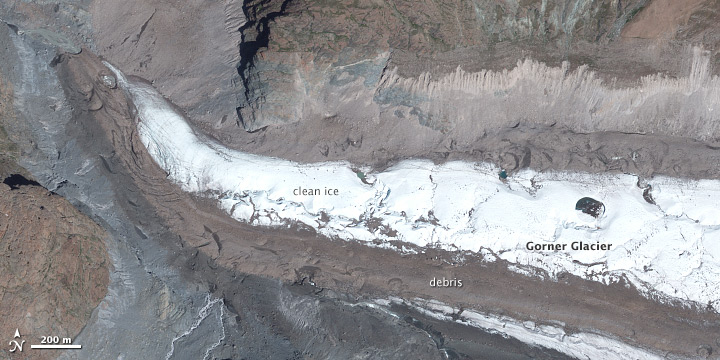




For a short time after a snowfall, glaciers are like blank white canvases. But it’s not long before the snowy surfaces are painted over with coats of dust, soot, ash, pollen, salt, sand, rocks, and other debris.
Nature has more than one paintbrush at its disposal. Winds can blow in plumes of smoke and dust to coat surfaces with black, gray, metallic, even reddish or yellow tones. Volcanoes spew dark ash and tephra that can be millimeters to meters thick. And landslides and lahars slosh thick layers of soil, pulverized rock, muck, and sediment on the icy canvases.
In the case of Zmutt Glacier, which is in the Swiss Alps near the base of the Matterhorn, debris comes from rockfalls from the steep terrain that hems the glacier in at the bottom of Zmutt Valley. The rockfalls send debris ranging from pebbles to large boulders tumbling down onto the ice in a rush. Winds blow pulverized rock flour and dust onto the glacier as well.
The top image shows the debris-covered surface of Zmutt Glacier, as seen by a sensor aboard the GeoEye-1 satellite on August 18, 2009. Debris bands with different geochemical compositions are visible. The rust-colored band near the top of the image is iron-rich; the gray bands south of it are iron-poor. The color difference relates to the composition of the rock to the north and the south of the glacier. The outcrop to the north is rich with minerals that interact with rainwater to produce an acidic environment on rock surfaces that leads to rapid chemical weathering of rock, while the combination of minerals in the outcrop to the south produces a less acidic environment that slows weathering.
For comparison, the upper image shows the surface of Findelen Glacier, which is a few miles east of Zmutt Glacier near the town of Zermatt. While Findelen has some fine dust on it, it lacks the thicker debris bands seen on Zmutt Glacier. The bottom image shows Gorner Glacier, another valley glacier near Zermatt. Like Zmutt Glacier, its surface has distinct banding, with clean ice sandwiched between debris on its northern and southern edges.
NASA scientist Kimberly Casey has developed new methods to map the composition of glacial debris using satellites. Since the composition of debris can affect the rate that glaciers retreat, her research could help answer long-standing, controversial questions about the impact of climate change on glaciers. To learn more, read the Earth Observatory’s new feature: “Painted Glaciers.”
Images based on GeoEye-1 data ©2009 Digital Globe. Caption by Adam Voiland.
© All Rights Reserved: Use of IKONOS, GeoEye, QuickBird and WorldView imagery must be coordinated with Maxar.